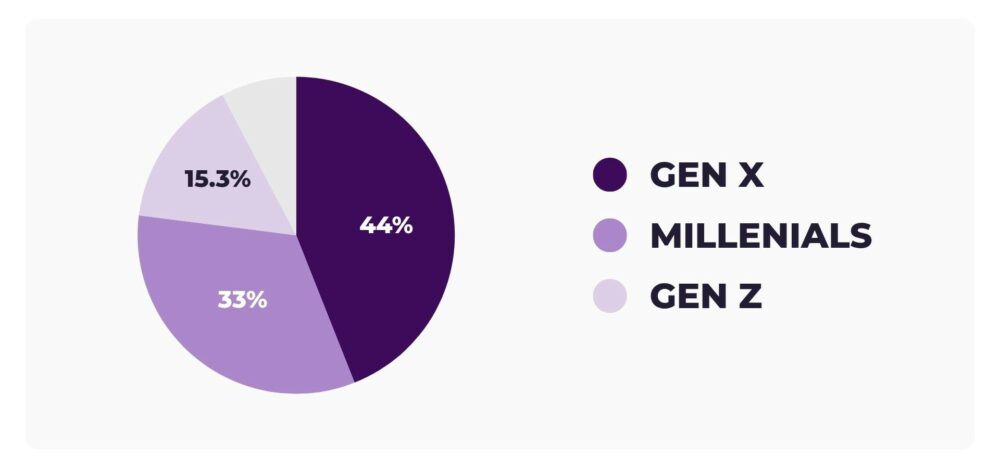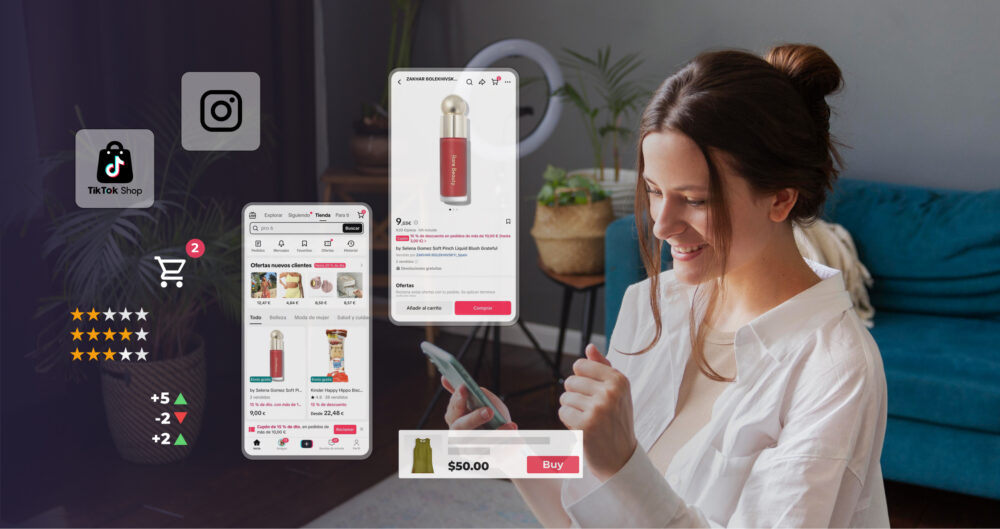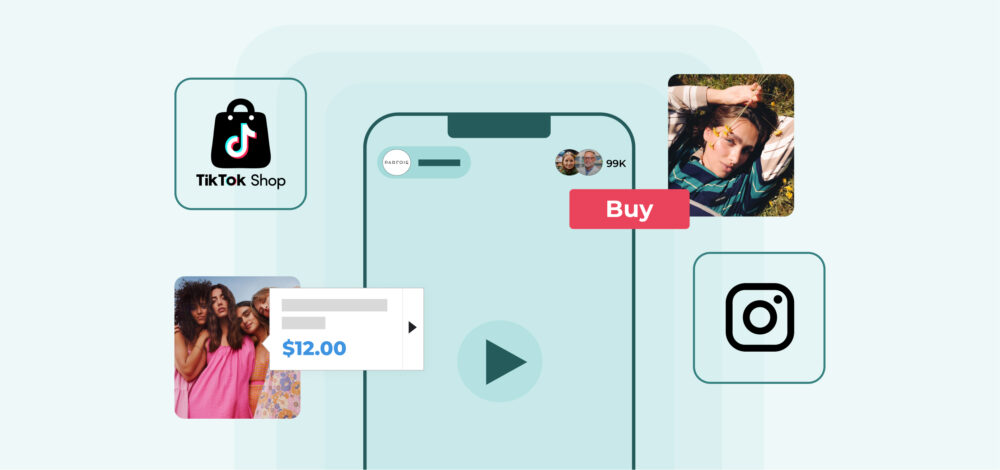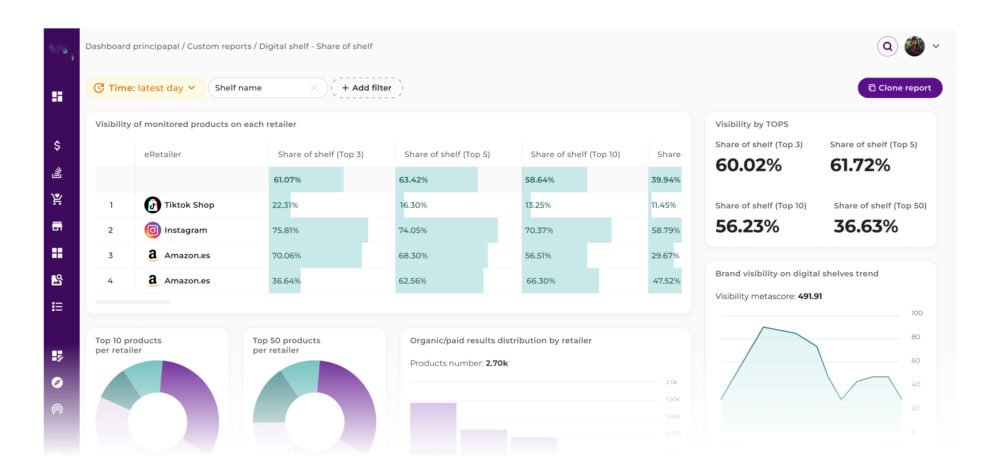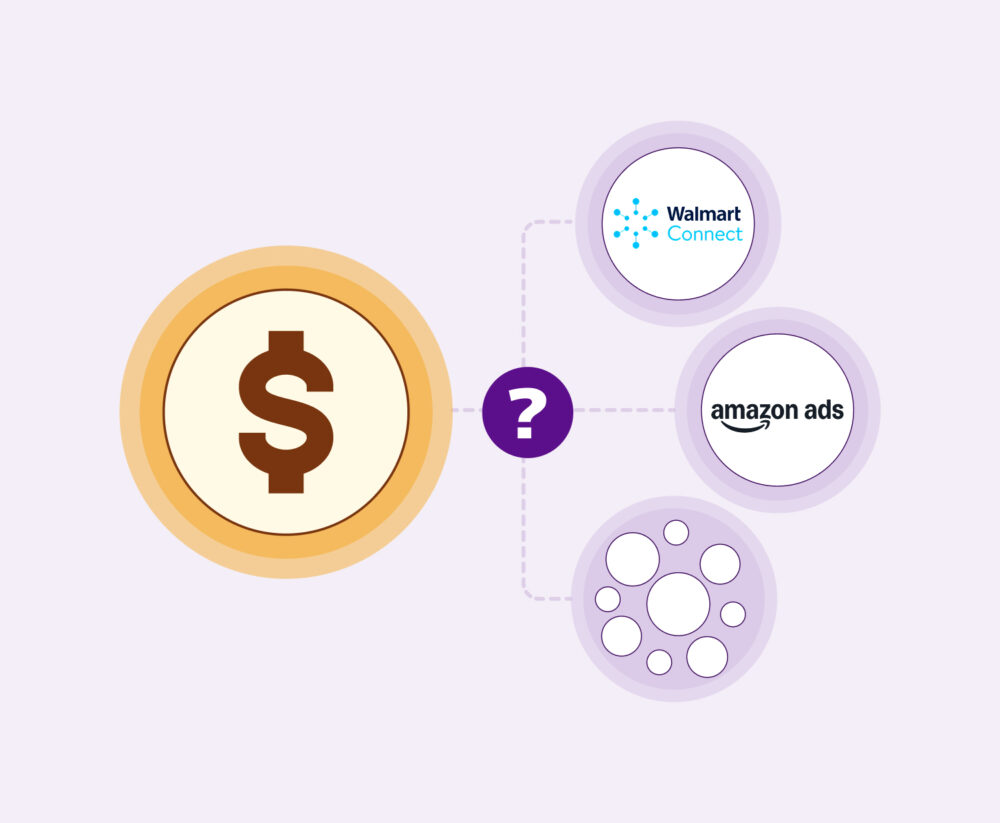Social Commerce Strategies Integrated into the Digital Shelf: 8 Ways to Boost Conversion
Nowadays, it’s no longer enough to capture the consumer’s attention: you need to guide them throughout their entire journey, from the initial point of contact to the final conversion. In this context, Social Commerce has established itself as one of the most effective levers for driving purchases, especially among younger generations, who use social media for entertainment and as their usual channels for discovery, comparison, and purchasing.
However, although it is often associated mainly with Generation Z, the potential of Social Commerce goes much further. According to data from Nielsen IQ, it’s the older generations who spend the most on platforms like TikTok Shop: Generation X accounts for 44% of total spending, followed by Millennials with 33%, while Gen Z, despite their level of interaction, makes up only 15.3%. This data reveals that interest and purchasing power in social commerce are not limited to the youngest audience, but span a much wider generational spectrum.
For these social interactions to translate into real sales, it’s essential to strategically integrate Social Commerce within the Digital Shelf. It’s not enough to simply have a presence on social media or launch one-off campaigns: what really makes the difference is the ability to connect all the dots—content, community, product, data—in a unified, agile, and conversion-optimised ecosystem. It also requires a deep understanding of today’s consumer, who browses between Instagram, TikTok, or any website, expecting a consistent experience at every touchpoint.
The following eight strategies are part of a unified approach that recognises the reality of the contemporary customer journey. Each has been designed to create synergies between your social media efforts and your Digital Shelf, maximising both reach and conversion.
8 Social Commerce Strategies Integrated into the Digital Shelf to Boost Conversion
1. Live Shopping on Social Media
Live shopping, is one of the most powerful trends. It involves hosting live streams on platforms like TikTok, Instagram, or YouTube, where products are showcased, questions are answered in real time, and viewers are given the option to purchase directly during the broadcast.
How to integrate it with the Digital Shelf:
- Product preparation: Make sure the products shown in the live stream have optimised product pages on your website. This includes high-resolution images, full descriptions, technical specifications, and, crucially, customer reviews.
- Direct links: During the live stream, use direct links and product tags that take viewers directly to the relevant product pages on your digital shelf. This reduces friction and facilitates impulse purchases.
- Repurposable content: Record your live shopping sessions and use them as video content on your product pages on the digital shelf. A customer who lands on your website after the live stream can watch the replay and experience the same level of interaction and demonstration.
- Cross-promotion: Announce your live events in your newsletters, Instagram Stories, and other platforms, driving traffic to your social profiles where the event will be held.
2. Syncing UGC from Social Platforms with Reviews on the Digital Shelf
User-generated content (UGC) is gold. It consists of photos, videos, or testimonials created by your own customers. This type of content is highly credible and persuasive.
How to integrate it with the digital shelf:
- Active collection: Encourage your customers to share their experiences using your products on social media with a specific hashtag. Run competitions or prize draws to incentivise participation.
- Digital shelf integration: Implement tools that allow you to automatically collect and display UGC from social media directly on your product pages on your website.
- Highlight Stories: Create “Highlight Stories” on Instagram or collections on TikTok with user-generated content that you can then link to from your product pages. Show how real people use and enjoy your products.
3. Collaborations with influencers
Influencers act as a bridge between your brand and your audience. Their recommendations have a huge impact on purchasing decisions, especially among Generation Z and Millennials.
How to integrate them with the digital shelf:
- Discount codes and affiliate links: Allow influencers to share personalised discount codes or affiliate links that lead directly to optimised product pages on your digital shelf.
- Influencer content on the Digital Shelf: Ask for permission to repurpose content created by influencers on your own product pages.
- Unified campaigns: Design campaigns where the influencer’s content on social media is directly complemented by the detailed information available on your digital shelf.
4. In-app check-out + direct links to optimised listings
Friction in the purchasing process is one of the biggest conversion killers. The fewer the steps, the better.
How to integrate it with the digital shelf:
- In-app check-out: Use in-app purchasing functionalities (such as those offered by Instagram or Facebook) whenever possible. This allows the customer to complete the purchase without leaving the social network.
- Listing optimisation: Make sure that each product listing on your digital shelf is impeccable: high-quality images, clear and concise descriptions, stock and price information, and a highly visible “add to basket” button.
- Inventory synchronisation: Ensure real-time inventory synchronisation between your social commerce platforms and your digital shelf. This prevents the frustration of a customer trying to buy a product that is shown as available on social media, but is out of stock on your website.
5. Targeted Social Paid Advertising
Paid advertising on social media is an effective tool for reaching specific audiences and driving qualified traffic to your Digital Shelf.
How to integrate it with the digital shelf:
- Advanced segmentation: Use data from your digital shelf (browsing behaviour, purchase history) to create personalised audiences on social advertising platforms. Target ads at people who have visited a product page but have not made a purchase, or those who have added an item to their basket.
- Dynamic product ads: Set up dynamic product ads that automatically show products from your catalogue to users who have shown an interest. These ads are updated in real time with pricing and availability.
- A/B testing: Constantly test your paid ads to see which formats, copy, and calls to action generate the greatest impact and the highest click-through rate to your digital shelf.
6. Interactive Shopping Experiences
Beyond live shopping, interactive shopping experiences seek to immerse the user and make the process more engaging.
How to integrate them with the digital shelf:
- Augmented Reality: Allow users to virtually “try on” products or see how they would fit in their environment. If you offer this on your social media channels, make sure the functionality is also available on or clearly linked from your digital shelf.
- Quizzes and buying guides: Create interactive quizzes in your Instagram Stories or polls on TikTok that help users discover the ideal product for them. At the end of the quiz, direct the user to a specific product page on your digital shelf that matches their preferences.
7. Social Customer Service
Social media is often the first point of contact for customer queries. Fast and effective customer service can directly influence a purchasing decision.
How to integrate it with the digital shelf:
- Information synchronisation: Make sure that answers to frequently asked questions on social media are consistent with the detailed information available on the product pages on your digital shelf.
- Fast, personalised responses: Use social media management tools to monitor mentions and messages, and respond swiftly.
- Intelligent routing: If a social media query requires more detailed information (such as an order status or specific product details), politely and efficiently direct the customer to the relevant section of your digital shelf or to your support team.
8. Advanced Use of AI + Multi-channel Analytics
Artificial Intelligence and multi-channel data analysis are the future of conversion optimisation.
How to integrate it with the digital shelf:
- AI-driven personalisation: Use Artificial Intelligence to analyse user behaviour on both social media and your digital shelf. This enables you to offer highly personalised product recommendations on both channels, increasing relevance and the likelihood of a purchase.
- Intelligent chatbots: Implement AI-powered chatbots on your social media that can answer common questions, guide users to specific products on your digital shelf and, where necessary, escalate the query to a human agent.
- Predictive analytics: AI can predict purchasing trends and anticipate demand, which allows you to optimise your digital shelf inventory and plan more effective social commerce campaigns.
- Multi-channel attribution: Use multi-channel analytics tools to understand how social media interactions influence conversions on your digital shelf. This allows you to correctly attribute the value of each touchpoint and optimise your marketing spend.
Measuring Success: Key Metrics, Data and Platforms
To make sure your integrated Social Commerce and Digital Shelf strategies are working, it’s crucial to measure success using the right metrics. Multi-channel attribution is particularly important for understanding how different touchpoints contribute to the conversion process. Without data, there can be no improvement.
Key Metrics
- Social Commerce Conversion Rate → How many clicks from your social media channels result in purchases?
This metric is fundamental to understanding the effectiveness of your social channels as direct sales drivers.
- Referral Traffic from Social Media → How much traffic is reaching your digital shelf from your social profiles?
An increase in this metric indicates that your social media efforts are driving users to your e-commerce properties.
- Average Order Value (AOV) from social shoppers → Do customers coming from social media spend more or less on average than other customers?
Knowing the specific AOV for this segment allows you to assess the quality and revenue potential of social shoppers.
- Cost Per Acquisition (CPA) for social customers → How much does it cost you to acquire a new customer through your social commerce channels?
Comparing this CPA with that of other channels will give you a clear view of the efficiency of your investment in these platforms.
- Rate of Reviews and UGC generated by social campaigns → How much new review or user-generated content can be directly attributed to your campaigns or calls to action on social media?
This measures the ability of your social strategies to foster social proof and trust.
- Return on Investment (ROI) from Social Commerce campaigns → How much profit do you generate for every pound spent on your social commerce efforts?
This metric is vital for evaluating the overall profitability of your integrated strategies.
Platforms for Multi-channel Analysis
This data will allow you to continuously monitor and adjust your strategies based on tangible results. Multi-channel analytics will be essential for understanding how different social touchpoints contribute to the complete purchasing journey. To achieve a 360-degree view and optimise your efforts, platforms like flipflow allow you to integrate your digital shelf analysis with what is happening on social commerce sites like TikTok Shop, providing you with the necessary market intelligence for agile and effective decision-making.
Conclusion
Integrating Social Commerce with your Digital Shelf is not just a matter of following trends; it’s a strategic necessity for competing in an increasingly dynamic market that is centred on the user experience. The brands that manage to articulate a cohesive strategy—where social content inspires and leads to informed and seamless purchasing decisions—are the ones capitalising on the true potential of this new paradigm.
Each of the tactics we have shared can act as a conversion lever if it is executed with an approach centred on data, personalisation, and multi-channel consistency. But for these actions to be truly effective, it is essential to measure their impact with the appropriate metrics and to be supported by platforms like flipflow, which integrates information from social media with behaviour on the digital shelf. Only in this way is it possible to optimise in real time, anticipate demand, and make informed decisions that boost both profitability and customer satisfaction.
Ultimately, Social Commerce and the Digital Shelf should not be seen as separate worlds, but as parts of the same conversion strategy. When they work in tandem, the result is a more engaging, efficient, and profitable shopping experience for brands and consumers alike.

